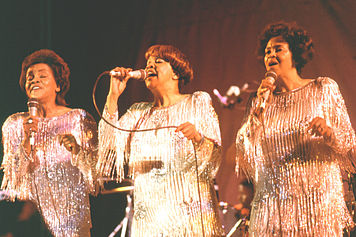 |
| Photo credit: ABC News |
The general consensus among creative people seems to be that the decision to make Pharrell Williams and Robin Thicke pay damages of $7.4M to Marvin Gaye's estate is ultimately damaging to the music industry. They argue that at its core music is an art of pastiche, in which themes, ideas, melodies, bass lines, rhythms, etc., that have come before are reused in fresh, new ways to create new works of art. Creating a litigious environment in which artists fear this basic process of pastiche is ultimately detrimental to the creation of new music.
 |
| Photo credit: Getty Images |
One of my favorites is this blog post by Chicago radio station WXRT, in which they cite 10 instances of songs that sound like other songs, including Jack White sounding like Led Zeppelin, Radiohead sounding the the White Album-era Beatles, and the Black Keys sounding like Pink Floyd, among others.
But to my ear, the most compelling comparison they make is between Cage the Elephant's "Ain't No Rest for the Wicked" and Beck's "Loser," primarily because "Loser" was such a sonic leap for its time, sounding like almost nothing else out there at the time.
Beck's sound here is still so distinctive 20 years later that the Cage the Elephant version sounds almost derivative to my ear. And therein lies the challenge of regulating the borrowing of music ideas. How similar does a song have to sound to another song to be considered a blatant ripoff?

















